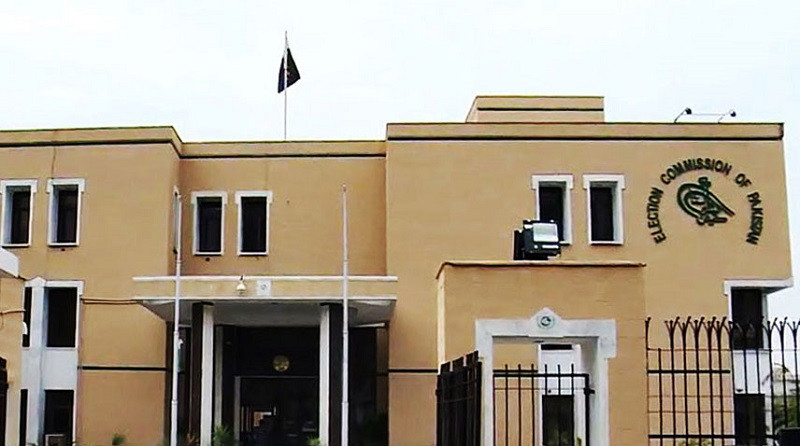
The Election Commission of Pakistan (ECP) failed to meet the legal requirement of keeping the variation in population to less than 10 per cent in a total of 135 constituencies – 70 National Assembly and 65 provincial assembly seats, it emerged on Sunday.
Shocking as it may seem, voters in these 135 constituencies would be electing a member of the National Assembly each but the difference between the highest and lowest number of registered voters in some constituencies is so huge that, in one case, one constituency equals to almost five.
For instance, NA-67 Hafizabad has the highest number of registered voters – 810,723 – while NA-244 Karachi West-I has the lowest number of registered voters 155,824; showing that varying voter-to-population ratios among NA, PA constituencies weakens the equal suffrage.
The disparity has been detected by the Free & Fair Elections Network (Fafen) in its report pertaining to delimitation of constituencies. It was released on Sunday, just four days before the country is all set to go to the Feb 8 general elections.
“Equality of population among the constituencies in an assembly also needs to be adhered to in the spirit of Section 20 (3) of the Elections Act 2017 (Principles of Delimitation), which restricts the population variation to 10 per cent,” Fafen said.
Notwithstanding Rule 10(5) of the Elections Act, 2017 that enables the ECP to restrict the population variation among the constituencies in a district, Fafen holds the population variation must be seen on the basis of the constituencies in an assembly as specifically provided in the law.
On that basis, it said, at least “70 NA and 65 PA constituencies did not comply with the legal requirement of Section 20 (3) of the Elections Act 2017”.
It said that Punjab has the highest number of National Assembly constituencies (28) with a variation in population of more than 10 per cent, followed by 21 in Khyber-Pakhtunkhwa, 18 in Sindh, and three in Balochistan.
Of the 65 provincial assembly constituencies that did not fulfil the legal requirement, it reads, 20 are in K-P, 18 in Punjab, 16 in Balochistan and 11 in Sindh.
In K-P, the report reveals, NA-18 Haripur has the highest number of registered voters (724,915), while NA-12 Kohistan Upper-cum-Kohistan Lower-cum-Kolai Pallas Kohistan has the lowest (196,125).
In Sindh, NA-209 Sanghar-I has the highest number of registered voters (607,638), whereas NA-244 Karachi West-I has the lowest number of registered voters (155,824).
In Balochistan, NA-255 Sohbatpur-cum-Jaffarabad-cum-Usta Mohammad-cum-Nasirabad has the highest number of registered voters (532,537), while NA-264 Quetta-III has the lowest number of registered voters (196,752).
Read: ECP admits grappling with shortage of special security papers
In Punjab, NA-67 Hafizabad has the highest number of registered voters (810,723), while NA-124 Lahore-VIII has the lowest number of registered voters (310,116). Among the three NA constituencies in Islamabad Capital Territory (ICT), NA-47 ICT-II has the highest number of registered voters, with 433,202, while its neighbouring constituency, NA-48 ICT-III, has the lowest 292,380 voters.
Examining the provincial assembly constituencies also reveals similar trends.
In Punjab, it reads, PP-7 Rawalpindi-I has the highest number of registered voters (386,073), while PP-11 Rawalpindi has the lowest number of registered voters (125,852).
In Sindh, PS-110 Karachi South-V has the highest number of registered voters (315,655), whereas PS-116 Karachi West-I has the lowest number of registered voters (43,045).
In K-P, PK-93 Hangu has the highest number of registered voters (325,951), while PK-33 Kolai Palas Kohistan has the lowest number of registered voters (43,481).
In Balochistan, PB-51 Chaman has the highest number of registered voters (194,081), and PB-45 Quetta-VIII has the lowest number of registered voters (50,160).
The voter-to-population ratio across different regions and constituencies also exhibits a diverse pattern.
Punjab leads in voter registration, with 57 per cent of its total population registered as voters, while Balochistan has the lowest voter registration, with only 36 per cent of its total population registered.
K-P shows a 53 per cent voter registration rate, Sindh follows closely with 48.5 per cent voter registration, and Islamabad records a voter registration rate of 45.8 per cent.
Of the 216 NA constituencies with available population statistics, 45 constituencies have over 60 per cent of their population registered as voters.
Additionally, 114 constituencies fall within the range of 51 to 60 per cent of their population being registered as voters, while 52 constituencies have voter registration rates between 30 and 50 per cent.
Notably, five constituencies, including one in K-P and two each in Sindh and Balochistan, have less than 30 per cent of their population registered as voters.
Across NA constituencies, NA-51 Rawalpindi-cum-Murree has 84.3 per cent of the constituency’s population registered as voters, which is the highest across Pakistan.
Conversely, NA-244 West-I has only 16.5 per cent voter-to-population ratio.
In K-P, NA-16 Abbottabad-I has 79.3 per cent population registered as voters, while NA-12 Kohistan Upper-cum-Kohistan Lower-Cum-Kolai Pallas Kohistan has only 18.8 per cent population registered as voters. In Punjab, the registered voters in NA-51 Rawalpindi-cum-Murree are 84.3 per cent of the constituency’s population, while in NA-125 Lahore-IX, the share of registered voters in the constituency’s population is only 37.9 per cent.
In Sindh, NA-241 South-III has 60.7 per cent of population registered as voters, while NA-235 East-I and NA-244 West-I, the share of voters in the population is only 16.6 per cent and 16.5 per cent, respectively.
In Balochistan, the constituencies with the highest and lowest share of registered voters are NA-263 Quetta-II (46.9 per cent) and NA-274 Quetta III (21.6 per cent).
Revealing the reason behind the disparities, Fafen said that multiple factors may contribute to these disparities, including the presence of Afghan, Behari, Bengali, Burmese, etc, populations in specific geographical pockets; internal migration patterns play a role, as individuals may be counted in one geographical area based on their residence for work or other reasons, while their voter registration remains in their native areas; and under-registration plausibly of women.
However, it said, “The ECP may dwell into specific reasons in an effort to ensure the principle of equal suffrage in its true spirit.”
The report has come on the heels of Fafen’s previous report where it found that the number of registered voters constitutes 53.2 per cent of the 241.49 million population.

1735986550-0/Untitled-(9)1735986550-0-405x300.webp)
1735984963-0/Untitled-(8)1735984963-0-165x106.webp)
1735983530-0/Untitled-(7)1735983530-0-165x106.webp)
1735981813-0/Untitled-(6)1735981813-0-165x106.webp)
1735980600-0/Untitled-(5)1735980600-0-165x106.webp)



1735983249-0/Untitled-design-(87)1735983249-0-270x192.webp)
1735978288-0/Untitled-design-(86)1735978288-0-270x192.webp)
















COMMENTS
Comments are moderated and generally will be posted if they are on-topic and not abusive.
For more information, please see our Comments FAQ